 Richard Starkings is one of my heroes. He’s a top-level creative talent, as well as one of the designers and letterers who helped revolutionize the lettering industry.
Richard Starkings is one of my heroes. He’s a top-level creative talent, as well as one of the designers and letterers who helped revolutionize the lettering industry.
It was a true honor to meet the man and spend an entire hour chatting about his career, his friends and colleagues, Doctor Who, and his clear and ongoing love for the comics industry.
Here’s part two of my exclusive two-part interview. Part one is available now on our sister site, DC Comics News. There we talk about his creator-owned work, and how he broke into comics, and in this installment, we learn about how he got to work with Alan Moore and Brian Bolland on The Killing Joke, and with Jeph Loeb and Tim Sale on the Long Halloween saga.
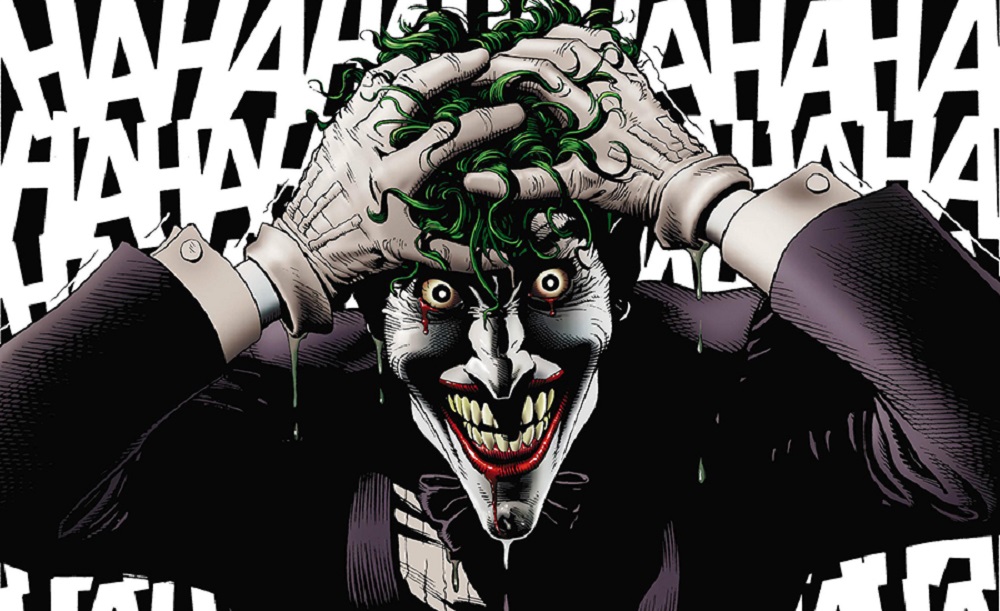
Steve J. Ray: So, how did The Killing Joke come about?
Richard Starkings: I was at Marvel UK standing at the photocopier, which is in the hallway when we were back in Bayswater, and a young writer called James Hill, who became an editor there too, was working on Thundercats. I was photocopying something for him to take away as a reference, and he said to me, “If you could work with any creative team, who would it be?”, and I said, “Easy, Alan Moore writing and Brian Bolland drawing. ” I said it knowing that it would probably never happen. At that time Steve Dillon was notorious at 2000AD at the time for getting slower and slower and slower, and they actually held up the “Apocalypse War” story until he finished “Judged Death Lives”.
He was taking a long time and it was chronologically set to happen before the “Apocalypse War”. So I remember, when I was picking up assignments at 2000AD, I would see pages coming in, back in the day when he was notorious for not hitting deadlines. So he actually thought that if he worked in the office, he’d get the work done.
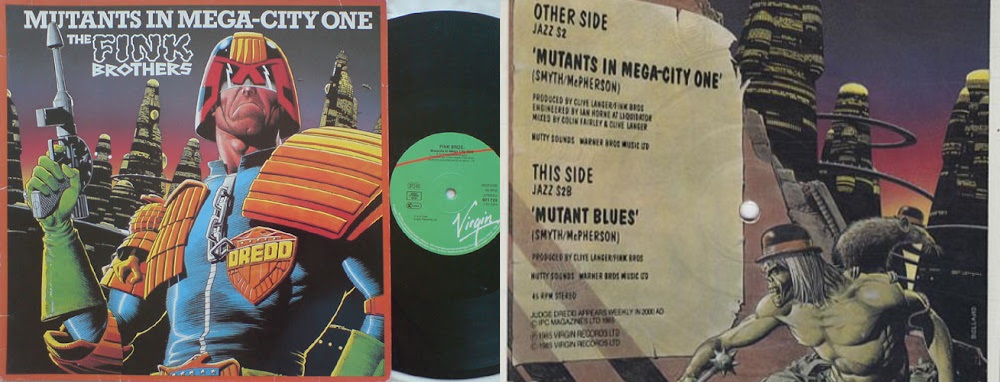
Richard Starkings: It was great seeing Steve, as he would work standing up. It almost looked like he was doing the ironing. He would be standing at a table drawing, and that’s when he was doing incredible Judge Dredd work, around the “Judged Death Lives” time, or thereabouts. Tom frame was lettering the cover to the Fink brothers single.
SJR: Mutants In Mega-City One!
Richard Starkings: Yeah. You know, Brian had done the cover? Fleetway (the original publishers of 2000AD) was much more like an office environment, and Marvel UK was a little bit more like high school. It was friendlier. DC felt like college or university, it was more serious, but Fleetway was a bit dustier. You know, it wasn’t a colorful place to go and pick up work. Steve McManus, Robin Smith, the other editors were really encouraging to me, though, they were really great. So I was in that circle.
When I was at Marvel, we went to the Birmingham comic art show and that’s where, by blind luck, I found myself sitting next to Brian Bolland. We were just lined up and he had nine pages of The Killing Joke on him. Jeff Anderson and other artists that worked for me on Transformers nudged me, saying, “Ask him, ask him!”, and I’m glad he did because when I asked if he and Alan had a letterer for the project, he said no. So, he wrote to Denny O’Neil, who was the editor, and they then established a page rate for me. That’s how I got to be the letterer on The Killing Joke!

Richard Starkings: Back then I was still physically pasting the letters and I’d already started lettering pages for Alan Davis on Detective Comics and I would letter them at home in Reading. When done, I would take them to Paul Neary (the inker on Alan Davis’ Detective Comics run), right to his house, and he would ship them. These were Detective Comics issues, I only did a handful. In the meantime, you know, Killing Joke took two years to finish. I asked Brian, he said, “Yeah”, just like that. I got to work with Alan Moore again, lettering the final Halo Jones book.
So I think DC was like, “Oh, this is a regular UK letterer, who’s got quite a lot under his belt”, and it was great. I’d held every page of The Killing Joke in my hands at one point or another, but I never took stats of the pencils, which makes me sad these days.
I knew that I loved it, but I didn’t realize everybody would love it. British creatives weren’t held in the same high regard before that, though they definitely were afterward. Don’t forget that this came right in the middle of Watchmen. In fact, it kind of read like an issue of Watchmen, because it had a very similar rhythm; the nine-panel pages. It also had pages where a character would be standing in one position at the end of the scene and the next character would be in a similar position at the beginning of the next one. There were a lot of similarities in Moore’s scripts.
It was a pleasure and a joy because Brian is a lovely person to work with, very generous. You’ll hate this story… at the end of it I went over to his apartment in Covent Garden, and he said, “Would you like a couple of pages?”, and I was like, “Yeah!” I picked out the page where Batman smashes through the mirror and the page where the Joker tells the joke.
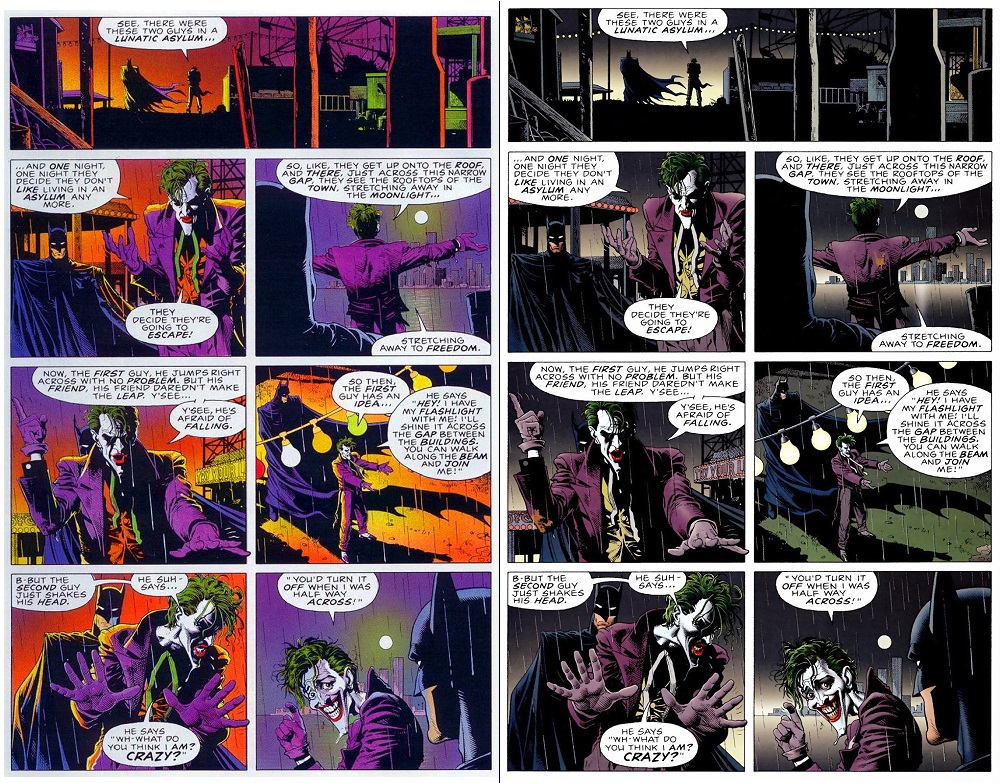
Richard Starkings: That page had a particular significance to me because I was going through making a decision to change my life in many different ways. You know, follow the flashlight? It’s a leap of faith, which is a very touching way to end the book. To me, that whole story makes its point in that one page where the Joker tells the joke. It’s about, “I don’t trust you”, and Batman saying, “You have to trust me”, and the dichotomy of how people can let you down, and how he was let down, and how the Batman was let down. All it takes is one bad day. I had a bad day, where I learned not to trust people. Eventually, though, you have to, that’s sort of what it boils down to. So I wanted that page.
John Higgins was a very good friend of mine… still is. He’d done the coloring over blue line pencil. He did them in watercolors, I believe. He didn’t have an original page himself, so I said I’d trade one of mine for the color version of the second-to-last page where he tells the joke. So I traded the page where that smashes through the mirror.
When I think back to that, I laugh. I wouldn’t make that trade again. I had those two pages framed, side-by-side for many years. Then I got an offer that seemed like crazy money at the time, it paid my mortgage for a month, and I sold it. It ultimately ended up in Dave Mandel’s collection (producer of Seinfeld and, and the showrunner on Veep).
SJR: What?!?

Richard Starkings: Oh, he’s a massive comic book fan. He owns most of the Killing Joke original art, and he ended up with mine. He spent a lot of his Seinfeld money on art, and good for him… because, yeah. I like the idea that somebody has all of them because when it comes to the Indiana Jones moment where “This belongs in a museum”, they will all be available to be shown in one.
I’ve been very, very lucky when it comes to Batman… if I have to work on a DC character, Batman is always top of the list. I have worked extensively on Superman with Jeph Loeb, Joe Kelly, and Joe Casey of course, and I really loved working with Ed McGuinness as he was one of my favorite artists of that period. I never quite got Superman the way I did Batman, though. DC characters to me are a little bit… one’s from another planet and the other one’s a millionaire, you know, not quite as down to earth as Marvel. Batman was human, though. I do love that.
SJR: That’s incredible. So how did The Long Halloween, and all its sequels come about? Was that the Archie Goodwin connection?
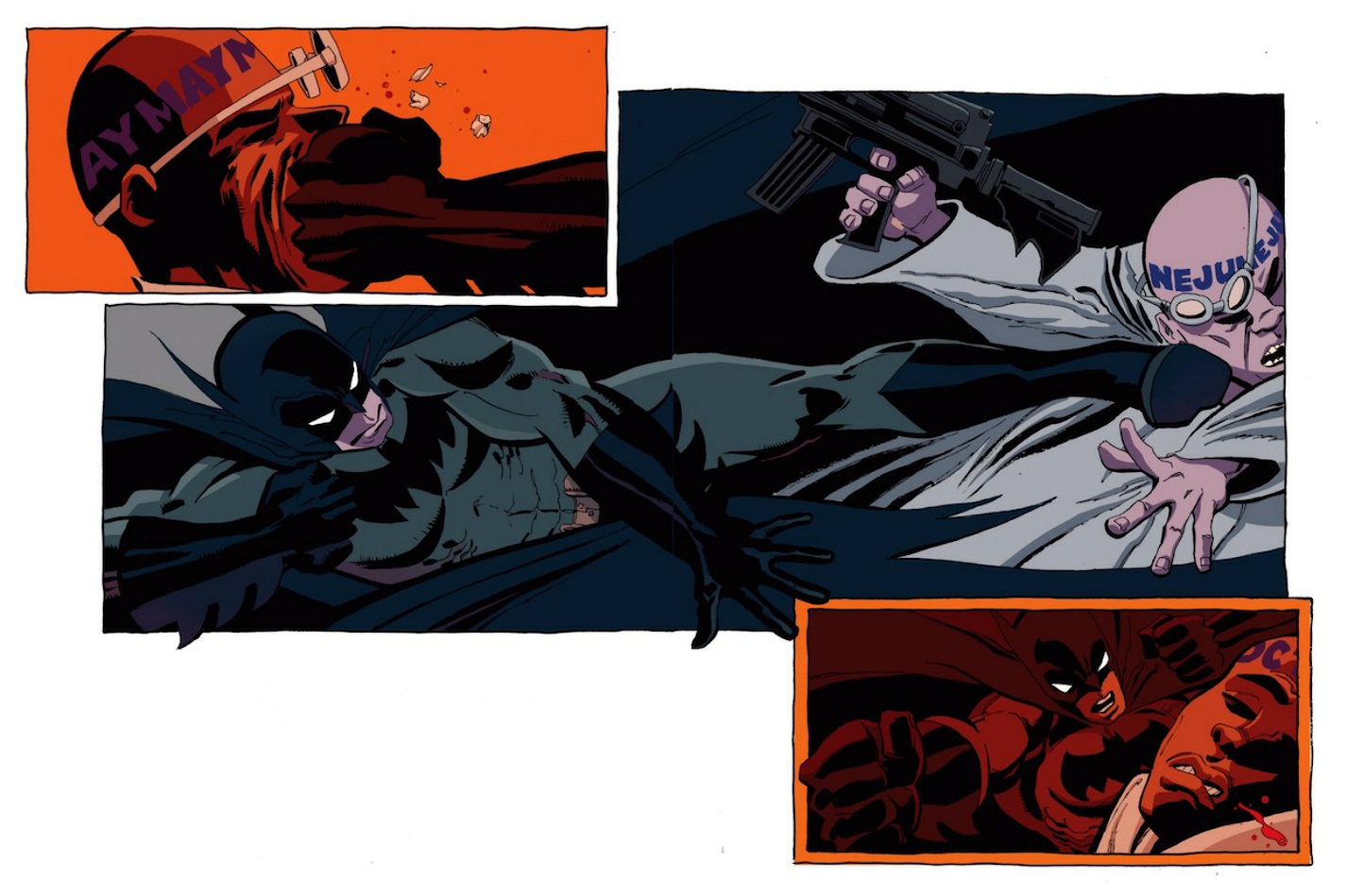
Richard Starkings: That’s actually ironic because Todd Klein had lettered the first Haunted Knight specials, and I was booked to letter Kingdom Come. I kept saying to Alex Ross that I was more of a Marvel guy, and appropriate for Marvels because I knew the Marvel characters, but Todd’s the DC guy and he should do Kingdom. Alex kept saying, no, no, he wanted me to letter Kingdom Come because we’d worked so well together on Marvels.
Finally, he listened to me. I’d already done some work on the Kingdom Come logo, from Alex’s design, but Todd ended up lettering the book. So then I was approached by Jeph Loeb to do The Long Halloween because I’d worked with him on his X-Men books. Yeah. ’96… that era. So Jeph loved what I did on his Marvel books and he wanted me on Halloween, but that was Todd’s book. So when Todd moved to Kingdom Come, I got Long Halloween. That was a good trade! Yeah, because Tim Sale and I, are best friends. Lovely man. Yeah, we’ve been close for over twenty-five years now.
Ultimately I made a font, well John Roshell and I made the font, but at Tim’s request. He wanted something that was gentle over his artwork. I always feel like if you make a font based on the artist’s work, the letters should match that ink lines. So we created it.
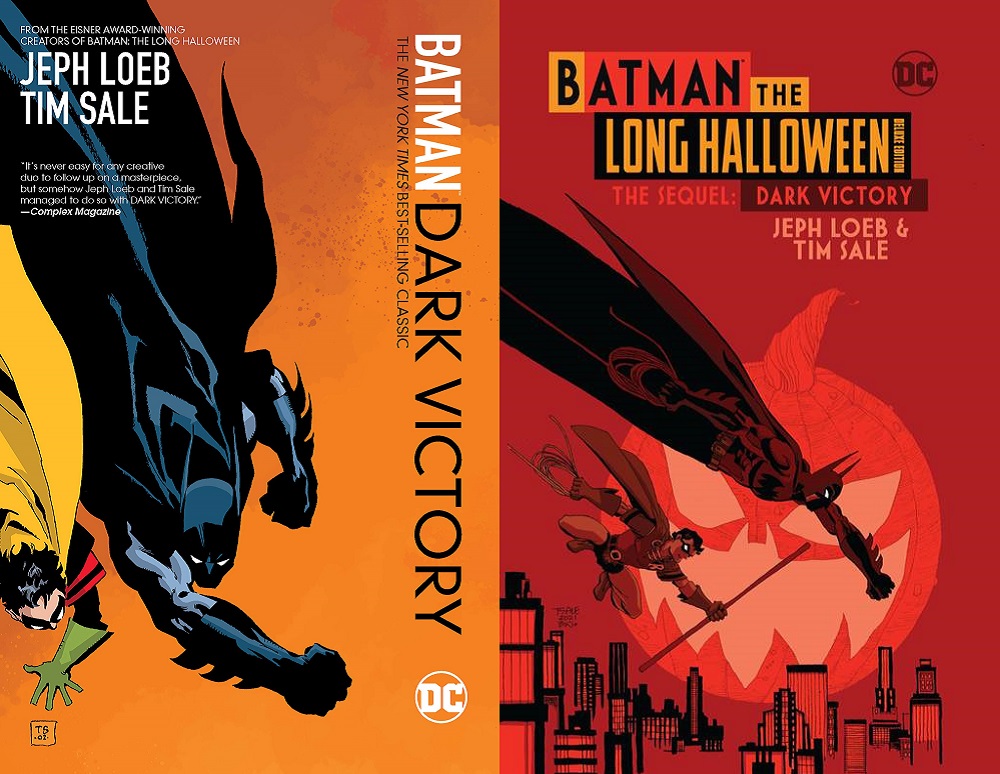
Richard Starkings: With Dark Victory, the first font we made for Tim was more like Sam Rosen, Tim’s favorite letterer. So we did a Sam Rosen-style font, but I didn’t think it looked right. So I persuaded Tim to let us do one based on his lettering for Billi 99, which was his dark horse Indy book. Because Tim came from the indie world, Grendel, Billi 99, you know, he and I talked and that’s the way we decided to go.
He and I talk about everything; X-Files, Gillian Anderson, we talk about movies. Tim believes that the first 20 minutes of a movie are the best 20 minutes, and anything after that’s disappointing because in the first 20 minutes, all your anticipations and hopes come into play and they’ll never be met. That’s his philosophy.
We even talk about Mexican food, and sometimes those conversations came about because of Tim’s career. I thought it was fascinating that when he went to the John Buscema art school in his twenties, he was working at a taco stand in Seattle, it’s called taco time. What a great, inspiring story. You can get into your late twenties and start a brand new career. That meant that I got to letter everything Tim worked on from then on. He’s my favorite artist to work with because I know what he wants. He’s taught me a lot about, “it doesn’t matter if this balloon on the back of the head, I don’t care”. It’s the storytelling. Some artists are very precious about lettering over their art, so working with Tim is easy. I know I’m not going to be contradicted and that he trusts me. I know his expectations and he knows mine too. So it’s very easy to work with him. We did all the Marvel color books together that way. (Daredevil: Yellow, Hulk: Gray, Captain America: White, Spider-Man: Blue). Hulk: Gray is actually my favorite.
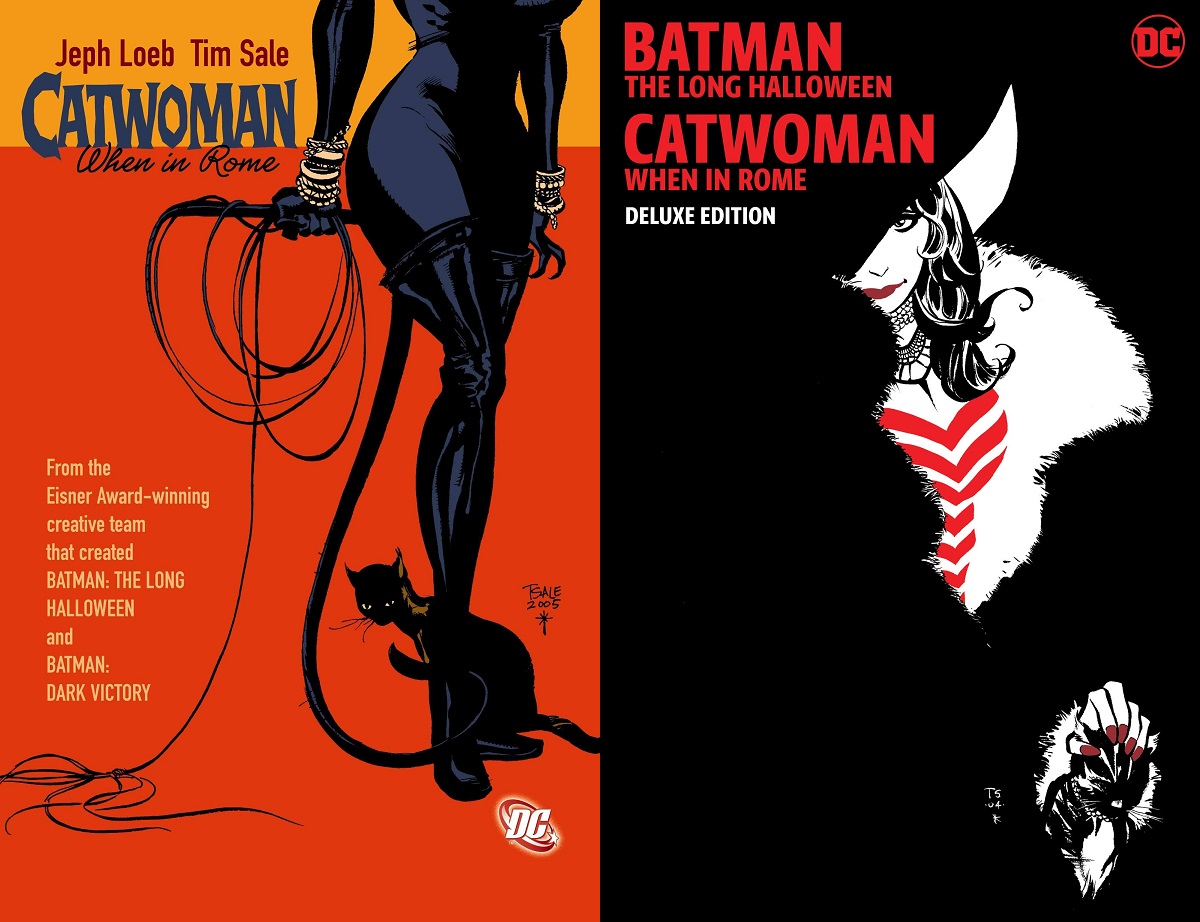
Richard Starkings: Now… Catwoman: When In Rome… We’re actually redesigning the entire Long Halloween Library right now. Moving forward it will be that The Long Halloween is the brand. All the new versions will be published as The Long Halloween: The Long Halloween: Dark Victory, and The Long Halloween: When In Rome. This is because there are still a lot of people who don’t know where to start and they don’t know how to continue and they didn’t realize that Dark Victory‘s a sequel to The Long Halloween. So it’s being rebranded.
Working on the 2021 Long Halloween special, it just felt like no time had passed whatsoever. I mean, I was blown away by how Jeph created the story that felt like, oh… it continues. He just hit it out of the park.
There’s also a lot more humor in Tim’s work now. Did you know that he’s very influenced by Chuck Jones? I called him on it once. I think it was in an issue of Dark Victory, where Catwoman jumps onto a table, and I said “That’s so Looney Tunes“. He admitted it. Yeah… Chuck Jones! In fact, he did a short Catwoman with Darwyn Cooke where Catwoman at one point looks just like Pepe Le Pew. You’ve got to dig it up. I can’t remember what it was published in, but Darwyn wrote it and it was the first time Tim drew the Darwyn Cooke Catwoman costume. It’s the goggles. Yes. I can’t remember what it was in.
SJR: Tim Sale is wonderful. I always loved how stunning his black & white work is, not knowing back then that he’s color-blind. I only found out when I interviewed him.
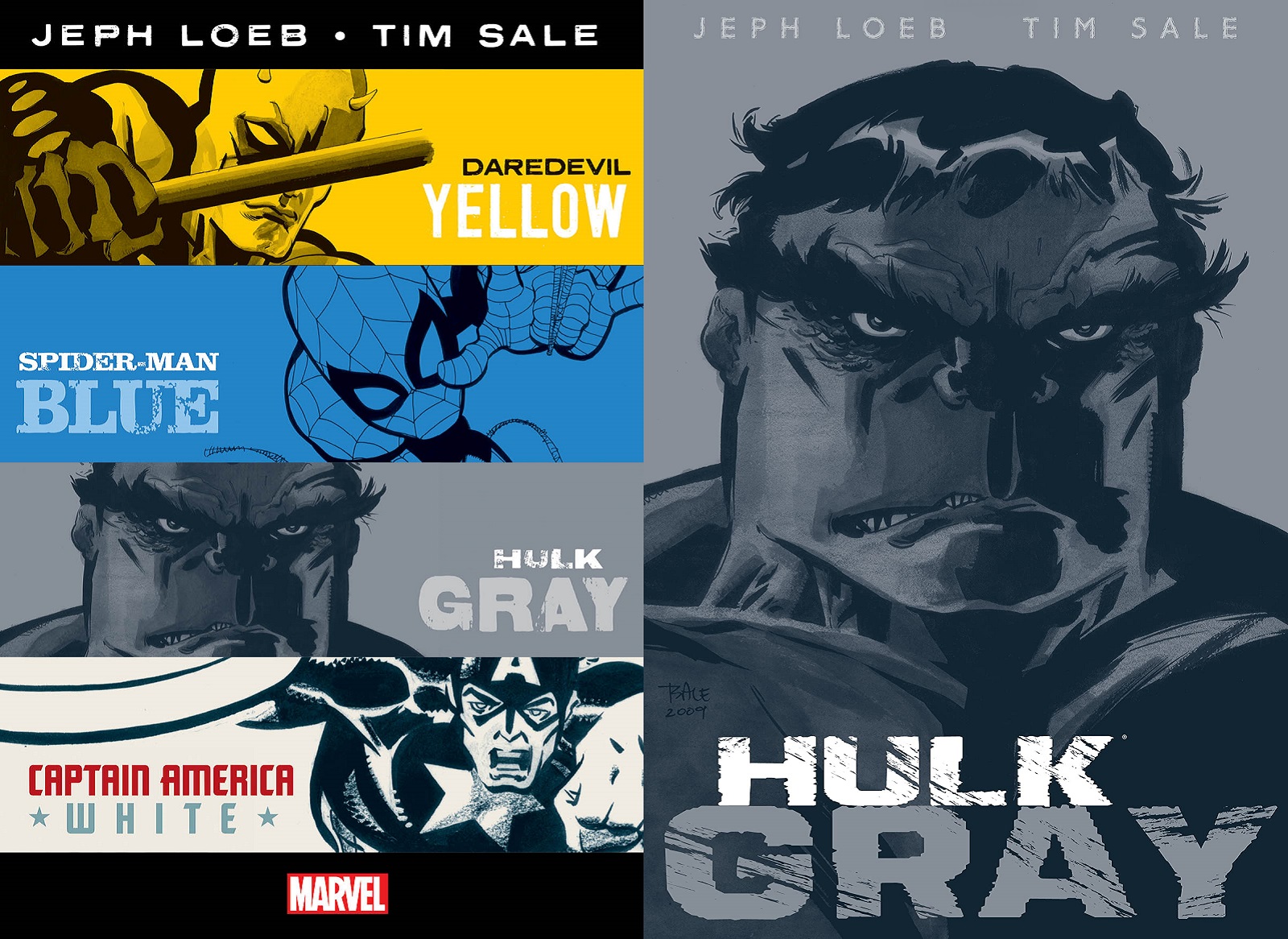
Richard Starkings: He and I need to record our conversations. Yes, Tim always works in black and white because he can’t
work in color. When we collaborated, it was when all the color books were came coming out. So I had published it under my imprint and we made it the same size as the Marvel color books… they sold out! It blew my mind that they sold out. I’d started working with Image at the time. So we did a much bigger version through Image, which is one of my favorites.
I know it was one of Tim’s favorite projects that he’s ever worked on because we just sat and talked for six hours at his house in Pasadena, way back… almost 20 years ago. Yeah. It’s been a pleasure for me, you know, an absolute joy.
SJR: You’ve been in this business for a long time, you’ve seen every side of it, you’ve worked and made friends with some legends. You’re now doing exactly what you want to do. I know, over the years that you’ve probably been asked every question under the sun about your career, but is there something you’ve always wanted to talk about that no one’s ever asked you about, or anything you’d like to tell our readers about?
Richard Starkings: The only thing I’d like to say is I’m a Buddhist. It really informs my life and my work, you know. It’s a life philosophy and it’s something I feel is missing from the world today. What’s fascinating about it is that it’s actually atheistic. There’re no gods in Buddhism. There are mythologies, but they’re not to be taken literally. It’s definitely informed my work and my working relationships. It’s helped me through a lot of challenges in my life, as I mentioned previously with Killing Joke. John Carnell, who wrote Sleeze Brothers, introduced me to Buddhism over 35 years ago. Crazy amount of time. The truth is that I’ve been asked many questions about comics, but there’s a lot more in my life.
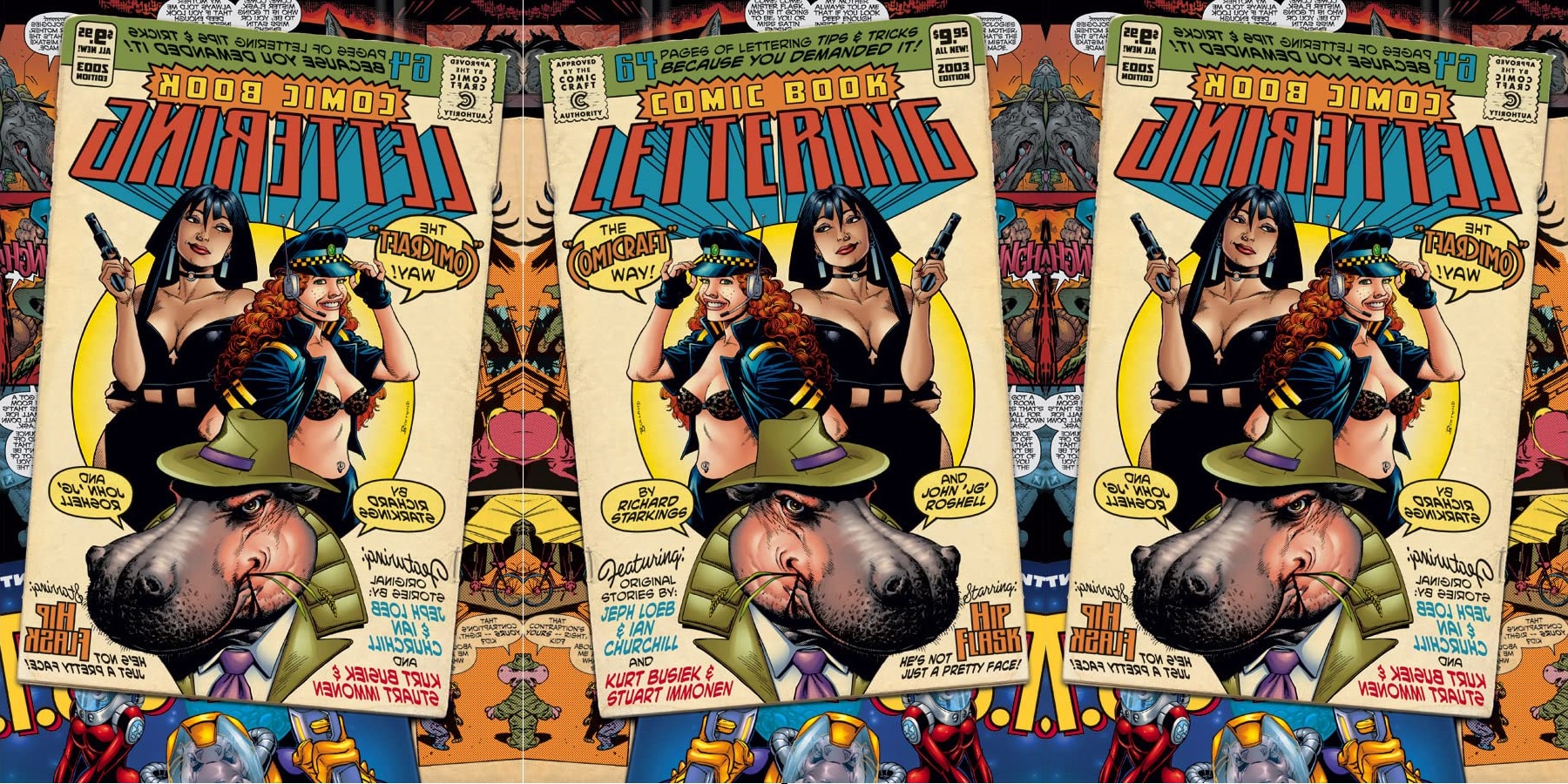
Richard Starkings: I still feel like I have a lot of awareness of where the industry’s going and I do think that, even in this conversation, we’re being nostalgic. Nostalgia comics have changed under our noses and we didn’t know it. Modern DC… it’s like printing vinyl records. There’s a collector’s market.
I’m shocked by how much is dictated by variant covers today. I think that’s an unsustainable model, a rip-off as well, but it’s, you know, it doesn’t matter because it’s collectors. I will buy a vinyl record for $40 and that is a rip-off, but I know I’m being ripped off, but I still want to buy it. I bought Elvis Costello’s Armed Forces album, which was very influential on me. It’s got elephants on the cover. We actually did a cover of an Elephantmen that was based on the cover of armed forces. The name of that volume is actually also “Armed Forces”. I remember Elvis on his Facebook page defending the price of it. I was like, I don’t care, I got this beautiful box set of my favorite Elvis Costello album.
So that’s the nostalgia market. How old were you when you started reading comics?
SJR: Five or six.
Richard Starkings: Yeah. A lot of people start reading comics at the age of about five or six and the key period is between six and sixteen, because that’s when you have the time. That’s when you have your mind open and emotionally imprint on the movie, the TV show, the comic that falls in that brief window. Star Wars, Doctor Who, Batman, Spider-Man.
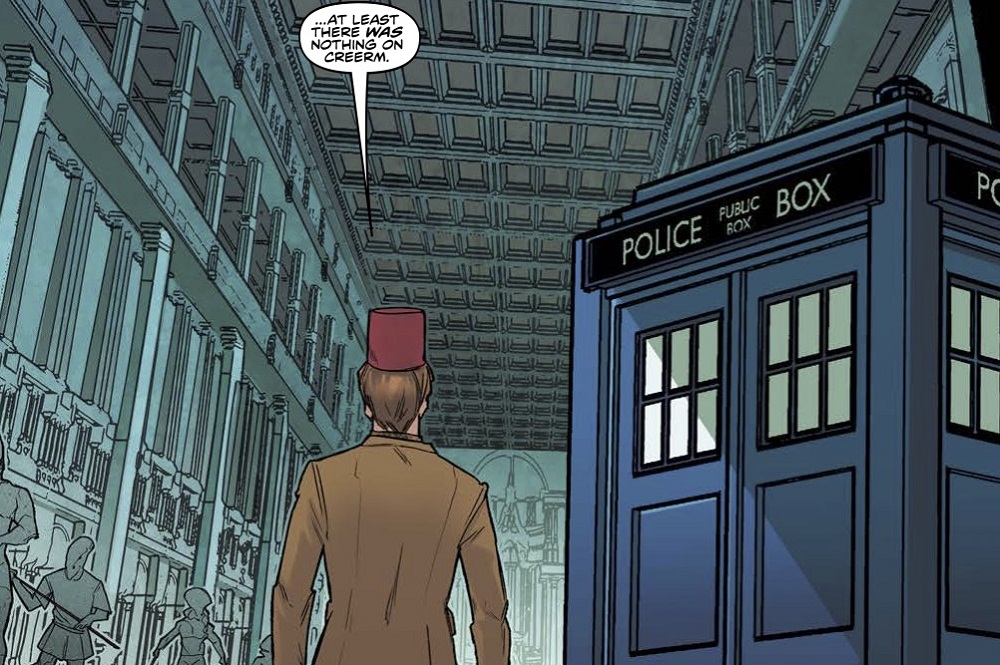
Richard Starkings: So, what are people imprinting on today? Adventure Time? League of Legends, World of Warcraft, Rick and Morty. So the franchises are different and the way kids are reading comics today is not the way we used to read comics, you and I. They’re reading them on the internet.
It goes all the way back to when Manga exploded in the early 2000s. Kids were downloading millions of pages of comics for free which were pirated because they were scans. The Japanese and Korean culture reaches into our culture much more than it did back then.
I go to WebToons and Amazon is reaching into everybody’s homes through Alexa, and is recommending comics. So the market has changed completely, but we’re acting as if people still go to comic book stores and just buy Marvel and DC comics. Marvel and DC also believe that myth, even though everything has changed.
So we work for many different publishers and we do very little work for Marvel or DC, but you asked me about my Marvel and DC work, and so does everyone. Ultimately the creators that would be asked about their work, won’t be asked about their world of Marvel and DC. That’s the shop window, but behind the windows are all kinds of franchises, all kinds of comics; based on video games, TV shows, and movies. I see sketches here, at Thought Bubble. I don’t know who that character is, but it doesn’t matter because the 20-year-olds that are coming through the door know exactly who it is. They buy that print and they buy that comic. I think we have to sort of stop looking at comics through the Batman/Spider-Man lens because there’s an enormous embarrassment of riches in comics today.

Richard Starkings: Unfortunately, the media says BANG, POW, CRASH! Batman and Superman inheritance. A few years ago, every young person was dressed as some character from Attack On Titan, or Firefly, or Battlestar Galactica. That’s the great thing, there’s a new generation getting exposed to comics in ways that are fresh and new, and we should embrace that.
I think Comixology originals do that. They have a wide variety of comics and styles and young people making comics. Thankfully there are also old pros, people like me, making comics with young people. That’s the thing we really need to look closer at. We need to allow young people to move into the industry and maybe put the old guys out to seed.
I’m sorry to say that, and it is great that we’re doing Batman: The Long Halloween, but it’s for the nostalgia market. There’s a new J.K. Rowling book that’s come out, right? The Christmas Pig? It’s designed like a Harry Potter book, and that’s now an established market. You can reactivate that market. Harry Potter started in the nineties and putting out a little story here and there, that’s a way of reactivating the line.
I don’t have any illusions about it and I love working with Jeph and Tim on The Long Halloween and we’ll do some more… but it’s the nostalgia market. It isn’t what most kids are reading now, it’s your father’s Oldsmobile. Kids these days are driving electric cars, and we need to catch up.
SJR: Thank you, so much.
Richard Starkings: You’re welcome. Thank you. Good questions.
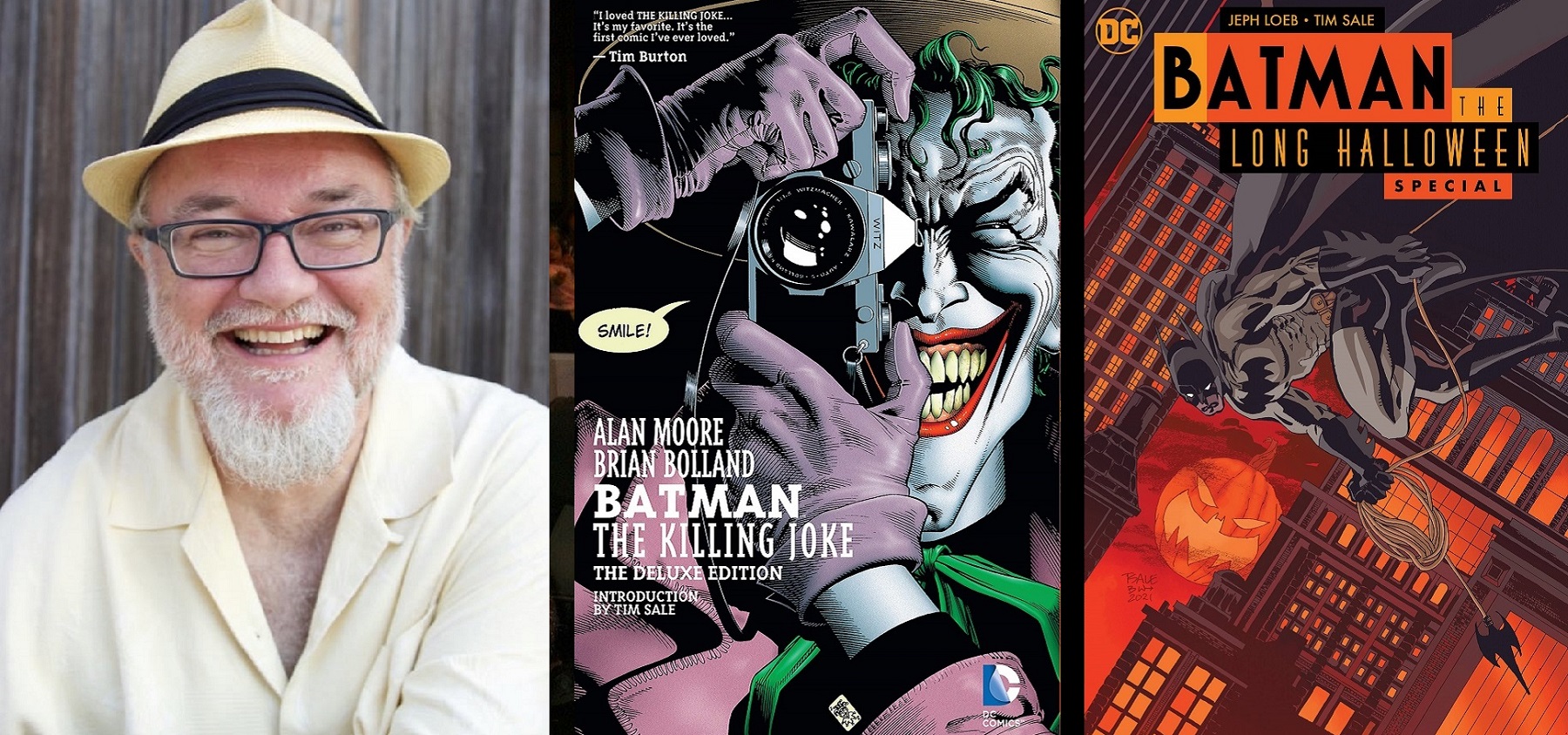
Mr. Starkings and I talked for over an hour on record, and long afterwards. We chatted about our shared love of Doctor Who and our mutual lifelong love of comics. While I agree that new characters, new voices, and new comics are needed, I still believe there’s room for the classic characters too. What I don’t agree with is putting the old guys out to seed, as a world without Richard Starkings’ comics would be a sadder world indeed.
Images May Be Subject To Copyright. Photos by Jessica Cole Eriksen and Luigi Novi.